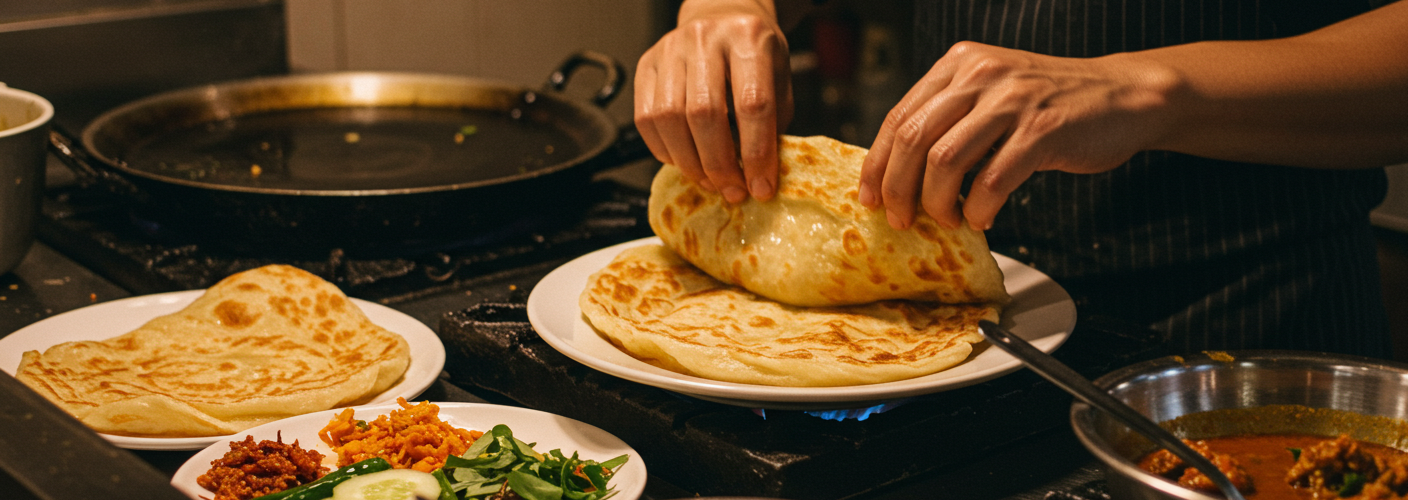When it comes to indulgent and versatile comfort food, few options can rival the deliciousness of Roti Canai. Originating from the Indian subcontinent, this flaky flatbread has made its mark across Southeast Asia, becoming a staple in numerous households and restaurants alike. Typically enjoyed in Malaysia, Singapore, and Indonesia, Roti Canai has transcended its roots to capture the hearts and palates of food enthusiasts around the world.
What is Roti Canai?
Roti Canai is a type of unleavened flatbread made from simple ingredients: flour, water, and ghee (clarified butter). The dough is worked until it achieves a smooth consistency, then allowed to rest before being stretched out, folded, and cooked on a hot griddle. This meticulous preparation contributes to the distinct layers that characterize the bread. The result? A beautifully golden-brown exterior with a soft, fluffy interior that is both airy and satisfying.
While the traditional method of making Roti Canai may take some practice, the results are undeniably worth the effort. The layers of the dough create a delightful texture that perfectly complements a wide variety of dishes, making it an ideal accompaniment.
Serving Suggestions
Roti Canai shines best when served alongside various curries or flavorful dishes. The bread’s subtle flavor and fluffy texture allow it to soak up rich sauces, enhancing the overall dining experience. Whether it’s paired with a hearty chicken curry, savory dhal, or a spicy fish curry, Roti Canai acts as the perfect vessel for savoring every last morsel.
For those looking to savor a more casual yet satisfying meal, Roti Canai can also be enjoyed with sweet condiments. A common practice is to serve it with condensed milk, sugar, or a drizzle of honey for a delightful breakfast or dessert option. The versatility of Roti Canai knows no bounds, catering to both savory and sweet cravings.
Roti Canai Variations
As Roti Canai has evolved, so have its variations. Some regions offer variations with added spices or fillings, such as onions or eggs, creating a heartier version known as Roti Telur. Other inventive adaptations include Roti Bom, which is thicker and often comes with a crispy, buttery exterior. Each variation adds a unique twist while maintaining the original’s essence, providing endless opportunities for exploration in taste.
Making Roti Canai at Home
For culinary enthusiasts eager to try their hand at making Roti Canai, it all begins with a basic recipe. The key is to knead the dough until it reaches an elastic texture and to allow it to rest adequately. After stretching and folding the dough is crucial; this process creates the signature layers. Mastering the cooking technique on a hot skillet will yield a delightful crispy exterior that contrasts beautifully with the fluffy inside.
While making Roti Canai at home can be time-consuming, the result is a rewarding experience that brings the taste of Southeast Asia into your kitchen and onto your table.
Conclusion
Roti Canai is more than just a flatbread; it’s a culinary experience that unites flavors, cultures, and cooking techniques. As an accompaniment to a variety of dishes or a sweet treat on its own, Roti Canai deserves a place on every dining table. Whether enjoyed in a street vendor’s food stall or crafted in the comforts of home, this beloved flatbread offers a delicious taste of tradition and ingenuity that never goes out of style. It’s time to indulge in the goodness of Roti Canai and discover why it has captured the hearts of so many.




Add comment